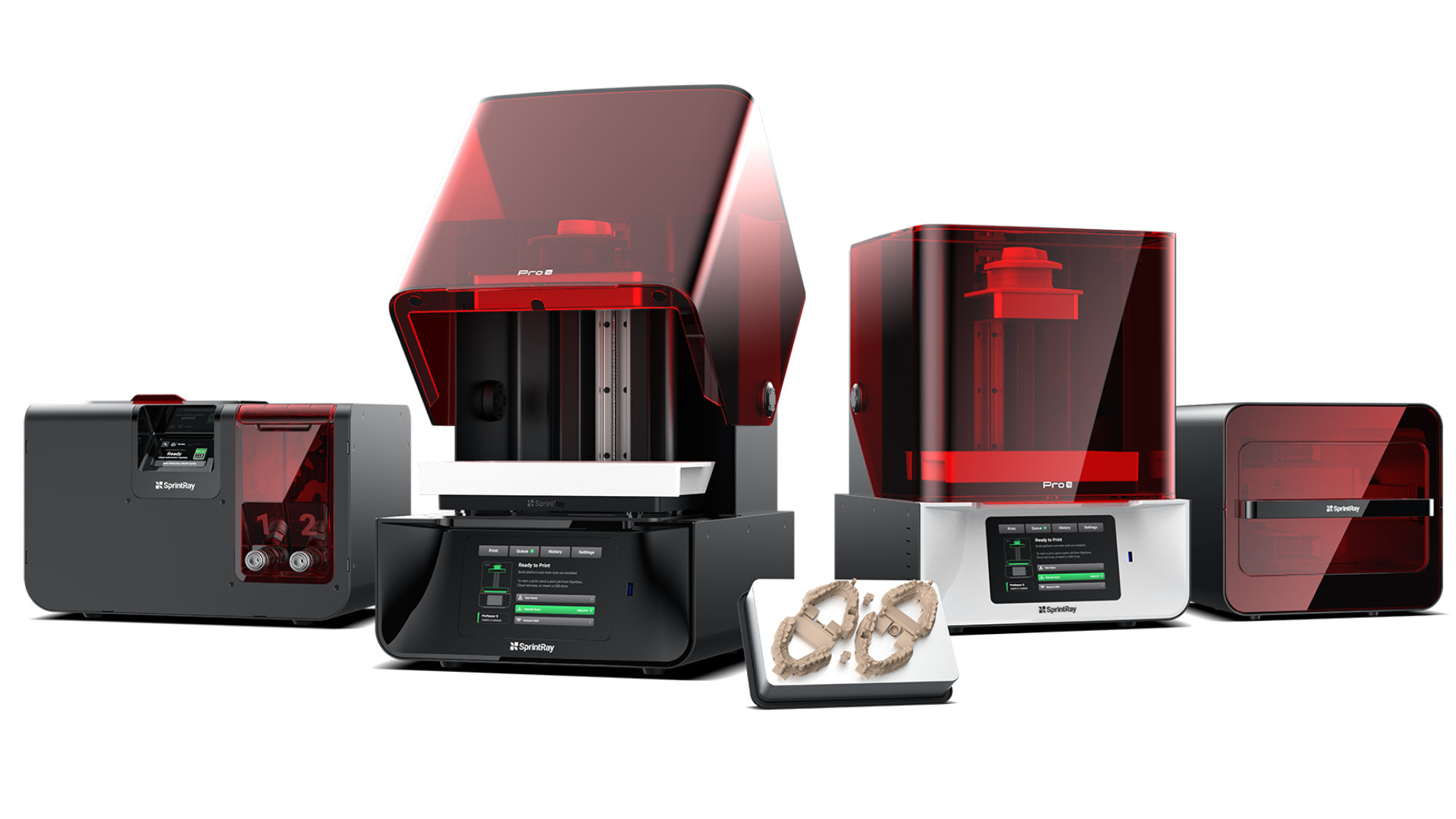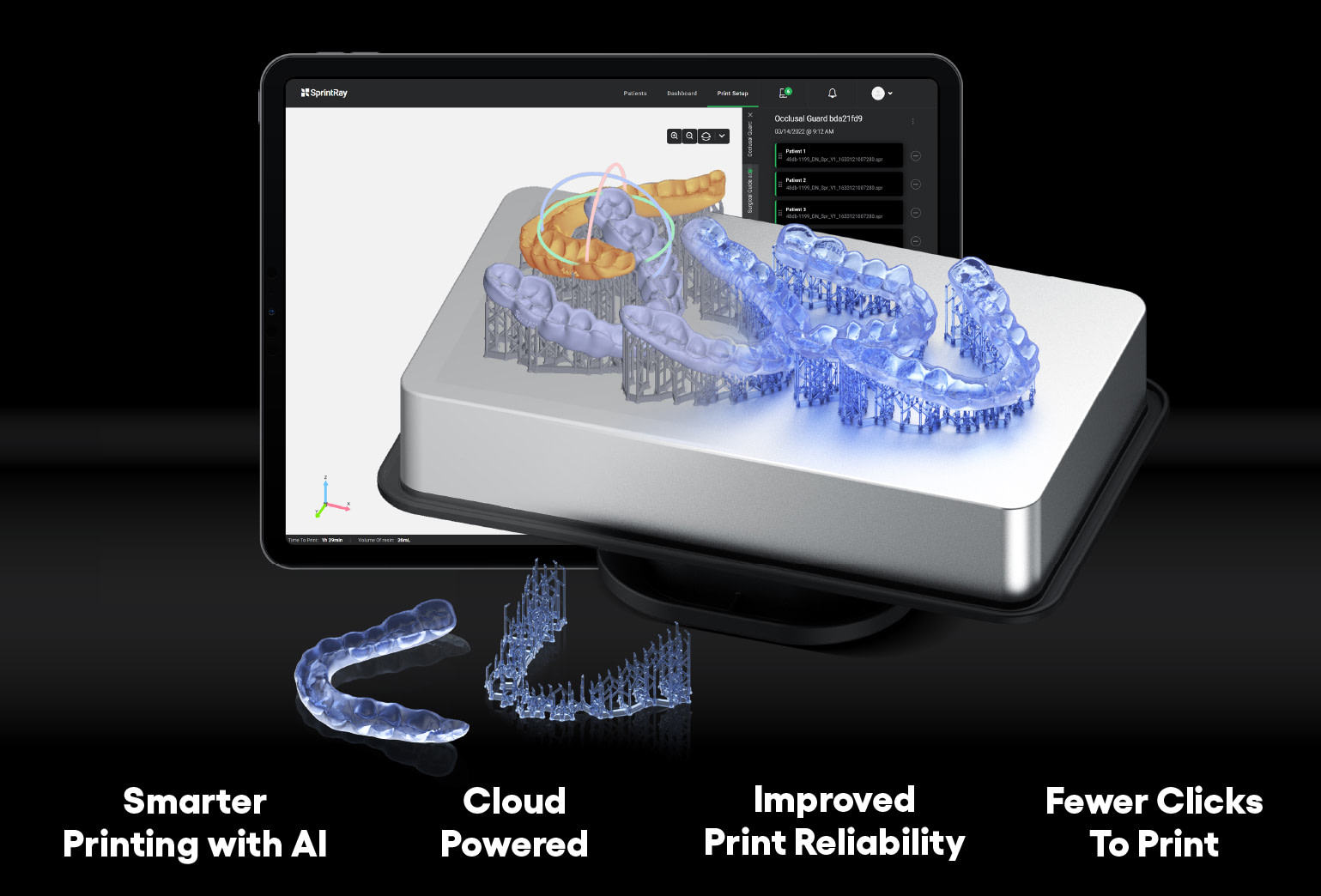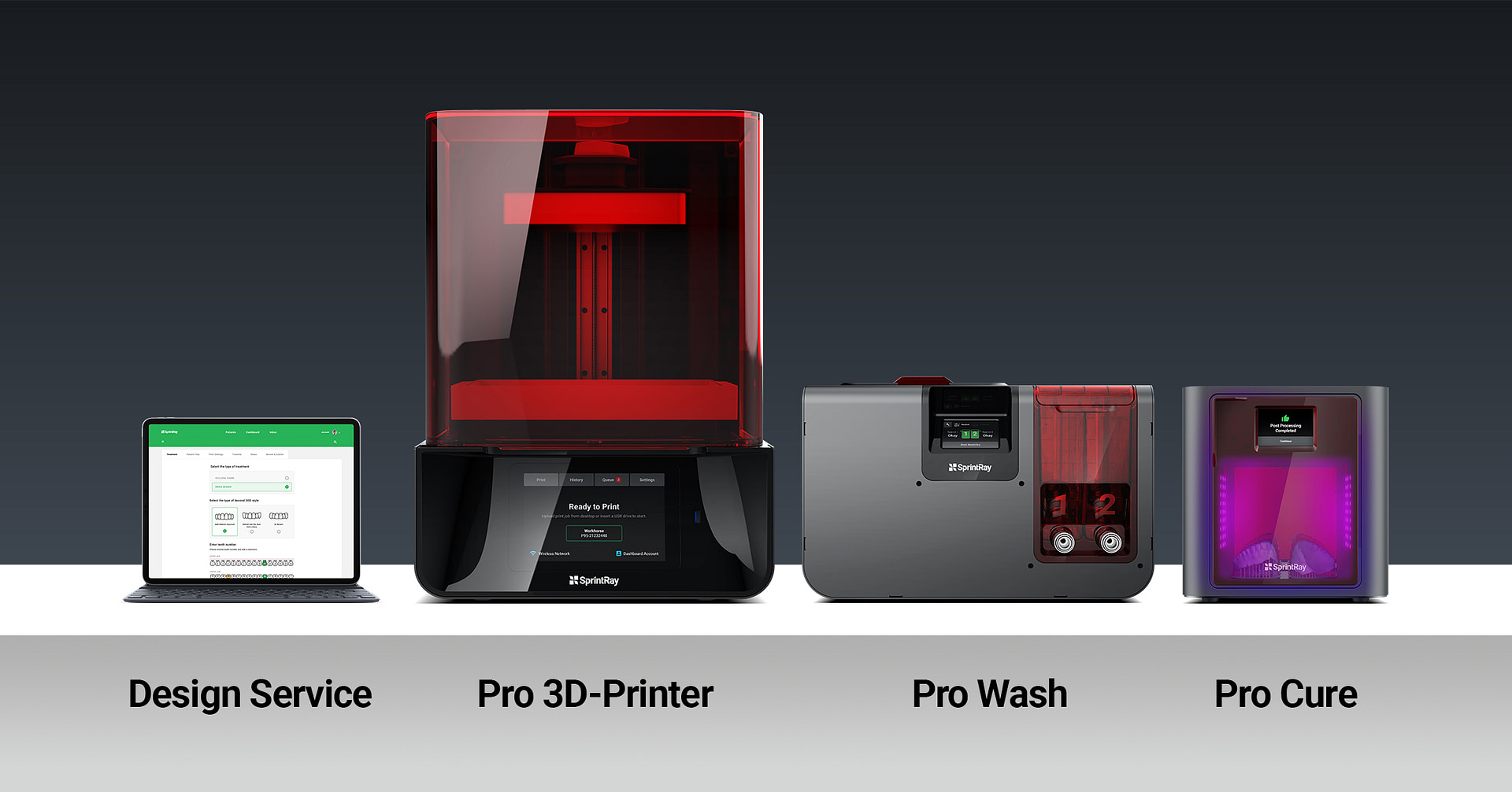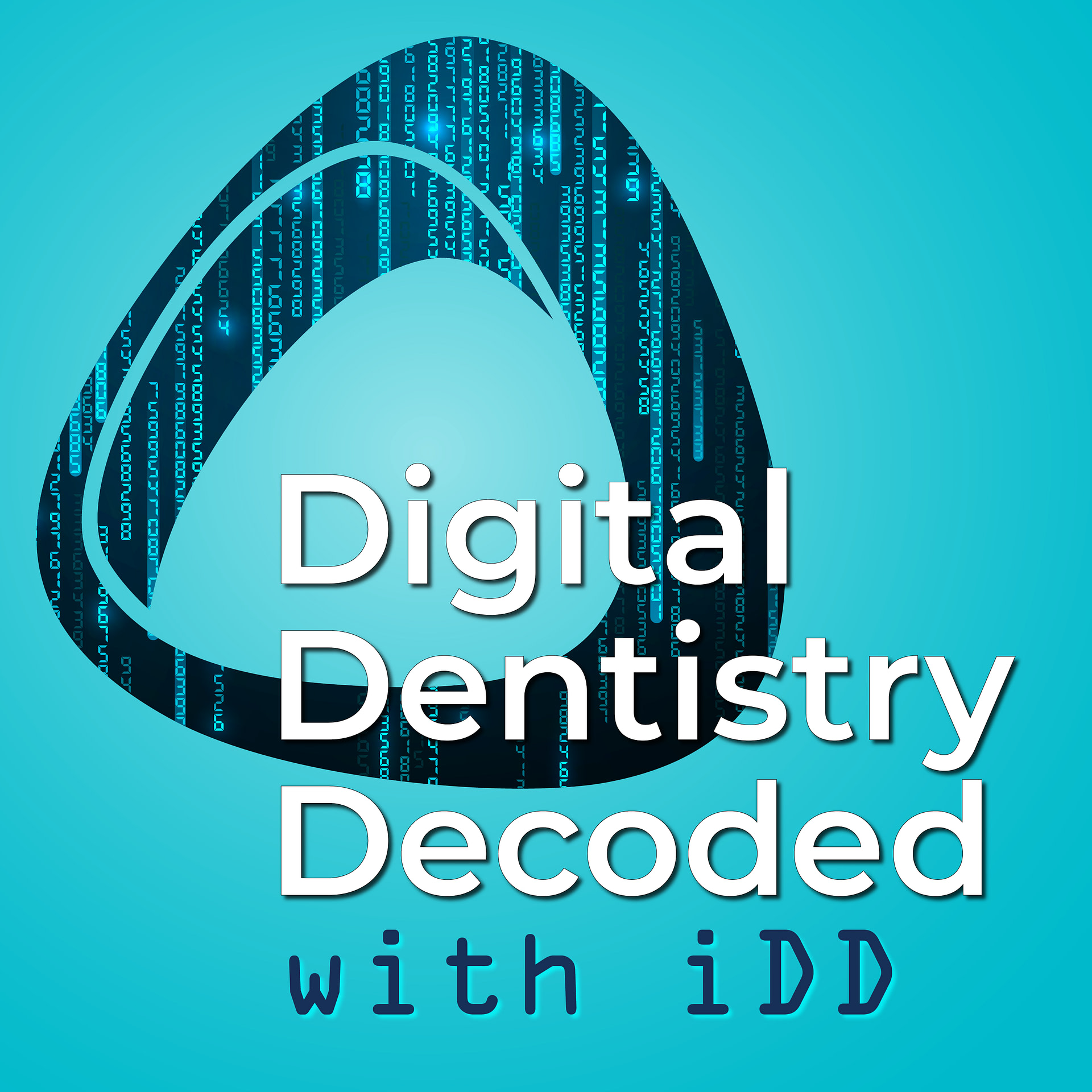The 3D printing revolution is in full swing, and it's transforming the landscape of digital dentistry, offering unprecedented opportunities for efficiency, customization, and patient care.
Following our insightful discussion with Rune Fisker from 3Shape about their vision for digital workflows in our previous Digital Dentistry Decoded podcast episode, we had the pleasure of speaking with Amir Mansouri, CEO of SprintRay, one of the leading innovators in dental 3D printing technology.
Amir's insights provide a fascinating glimpse into the past, present, and future of this transformative technology.
From Jewelry to Dentistry: SprintRay's Journey
SprintRay's entry into the dental market is a testament to the power of innovation and adaptability. Amir shared the company's surprising origin story.
"We started off in my twenties as a musician. In my thirties, I was studying a lot of stuff from Master of Arts, Master of Science, International Management, Audio engineering, a lot of, masters and studies. And in my forties, I decided to start business to do my own software to do my own projects."
Initially focused on 3D printing for jewelry, the company pivoted to dentistry after recognizing the immense potential in the field. This shift was catalyzed by the expiration of Invisalign patents in 2014-2015 and the introduction of NextDent's comprehensive resin portfolio in 2016.

The Evolution of 3D Printing in Dentistry
Amir outlined three distinct phases in the adoption of 3D printing in dentistry:
Orthodontics
The initial wave, driven by the need for high-volume model production.
General Dentistry
Expansion into applications like splints, night guards, and surgical guides.
Restorative Dentistry
The current frontier, focusing on more complex applications like crowns and bridges.
On the current state of restorative applications, Amir noted: "Restorative dentistry is, we hope it's the today, however, like you said, the clinicians, even labs are not as convinced as we would like them to be, to make the transition. However, I do believe in the next three years, we will see that becoming more mainstream."
The Power of AI in Dental 3D Printing
One of the most exciting developments in the field is the integration of artificial intelligence. SprintRay is at the forefront of this trend, leveraging AI to streamline and accelerate the design process.
Amir shared an exciting preview: "Soon we will release a new version for the 3D smile design for the mock-up design, editing design, can be done in three minutes. I mean, if you can offer the patient a mockup, print it, in the first appointment you design in three, four minutes, the 3D design, and then you print and you put it in the mouth."

This rapid turnaround time has the potential to revolutionize patient consultations and treatment planning, allowing for immediate visualization and modification of proposed treatments.
Materials: The Key to Unlocking 3D Printing's Full Potential
While hardware innovations are crucial, Amir emphasized that the real game-changer in 3D printing is materials science. SprintRay is investing heavily in developing new resins that can match or exceed the properties of traditional dental materials.

When asked about the potential for 3D printed restorations to compete with materials like lithium disilicate or zirconia, Amir provided a measured response, "My forecast is in the next two years, you will see materials reaching that sort of mechanical properties and 3D printing could take some portion of the economy milling market. Not more than 20%. My forecast would be anywhere between 5% and 10% in the first two years."
Overcoming Barriers to Adoption
Despite the tremendous potential of 3D printing, adoption rates among clinicians remain relatively low.
Amir identified several factors contributing to this:
- Lack of familiarity with the technology
- Concerns about material properties and longevity
- Workflow integration challenges
- Initial investment costs
To address these barriers, SprintRay is focusing on education, continuous material improvement, and streamlining workflows to make the technology more accessible and user-friendly.
Advice for Dentists Considering 3D Printing
Amir offered practical advice to dentists looking to incorporate 3D printing into their practice.
"Start small. Um. I picked earlier, I talked a little bit about splints. It doesn't have to be splints, it could be surgical guides, it could be something else, but I would start some, somewhere small, um, to kind of make sure you're comfortable with, with the utility of what you're delivering to your patients."
He also stressed the importance of due diligence: "Do your homework. There's a lot of noise out there. Um, we spend an incredible amount of time our residents are, are developed in. And manufacture and ISO certified FDA, um, validated the facility. These are things that are really important to, uh, to your patients."
The Future of 3D Printing in Dentistry
Looking ahead, Amir envisions a future where 3D printing is an integral part of every dental practice.
Key areas of development include:
- Continued improvement in material properties and aesthetics
- Further integration of AI for automated design and quality control
- Expansion of printable applications, potentially including full ceramic restorations
- Increased focus on chairside solutions for same-day dentistry

SprintRay workflow from design to finish.
As Amir put it, "The sky's the limit on what we're gonna be able to accomplish."
Conclusion
The 3D printing revolution in dentistry is well underway, promising to transform everything from routine procedures to complex restorative work. As the technology continues to evolve, driven by innovations in hardware, materials, and AI, we can expect to see increasing adoption across the dental industry.
At iDD, we're committed to helping dentists navigate this exciting frontier of digital dentistry.
By staying informed about the latest developments and best practices, dental professionals can position themselves at the forefront of this technological revolution, ultimately providing better, more efficient care for their patients.
We'll continue to closely follow the developments in 3D printing and other digital dentistry technologies, bringing you the latest insights and practical advice to help you succeed in the digital age of dentistry.
Stay tuned for more exciting updates as we continue to decode the future of digital dentistry!

